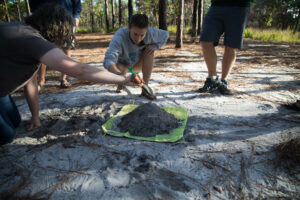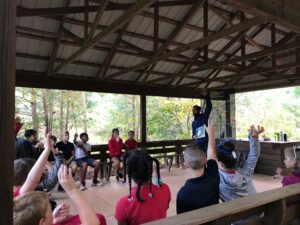News & Updates
The Case to Use Social Media to Educate, Not Degrade


Social media is an incredibly powerful tool, and how we use it has the power to influence the behavior of others. If social media users are aware of the impact their posts can have, they can use their online presence for good. By modeling good environmental stewardship, it could inspire a new audience to practice ethical behavior. Because social media allows us to share information with a wide audience, stewardship-minded social posts could reach users that may traditionally be excluded from sustainability information.
Often, scientific information has difficulty breaking through due to cultural or structural barriers. Responsible and informed social media posts can increase access to important facts about sustainable living. People feel inspired, motivated, and more comfortable engaging in sustainability when they see others that have similar racial, cultural, or ethnic backgrounds participating in these activities.
 Given the exclusion from environmental activism and sustainability that minority groups continue to experience, education and stewardship can have more validity on an individual level when it comes from a voice that shares a similar cultural background. Spreading awareness from voices that can resonate and relate with underrepresented communities is paramount to more equitable education, and social media is often used in this way as a non-exclusionary platform for grassroots education. This can have a powerful positive impact on the encouragement of environmentally responsible behaviors: everyone has the opportunity to make a difference through responsible social media use.
Given the exclusion from environmental activism and sustainability that minority groups continue to experience, education and stewardship can have more validity on an individual level when it comes from a voice that shares a similar cultural background. Spreading awareness from voices that can resonate and relate with underrepresented communities is paramount to more equitable education, and social media is often used in this way as a non-exclusionary platform for grassroots education. This can have a powerful positive impact on the encouragement of environmentally responsible behaviors: everyone has the opportunity to make a difference through responsible social media use.
Social media users should consider the impact of their posts and how they can impact the stewardship of their community, local green spaces, or communal gathering areas. Users should be cognizant of the non-explicitly stated impact of what their images may portray, as others may emulate behavior- both positive and negative. Take it a step further and consider explicitly stating stewardship practices in posts, inviting others to begin their own journey with everyday sustainability.
In the past, much environmental education was top-down, lending to a feeling of  hierarchy that left many feeling disempowered. Environmental education through social media is lateral, as people can use their messaging and online presence to equip others with the needed resources to further their learning and inform others, creating a teacher-to-teacher dynamic that is accessible and equitable to a wider audience. This behavior empowers self-guided education and self-governing over environmental impacts, creating a sense of collective ownership.
hierarchy that left many feeling disempowered. Environmental education through social media is lateral, as people can use their messaging and online presence to equip others with the needed resources to further their learning and inform others, creating a teacher-to-teacher dynamic that is accessible and equitable to a wider audience. This behavior empowers self-guided education and self-governing over environmental impacts, creating a sense of collective ownership.
Finally, social media users should consider educating themselves on the cultural and historical heritage of the land they reside and recreate on. Including a land acknowledgement in social posts can encourage relationship building and reciprocity with indigenous communities. This recognition and respect to those displaced from their traditional homelands has implications for further education of an area’s cultural history, and acts as an initial stepping stone for collaboration with indigenous communities.
Let’s protect and enjoy our natural world together
Get the latest in Leave No Trace eNews in your inbox so you can stay informed and involved.
